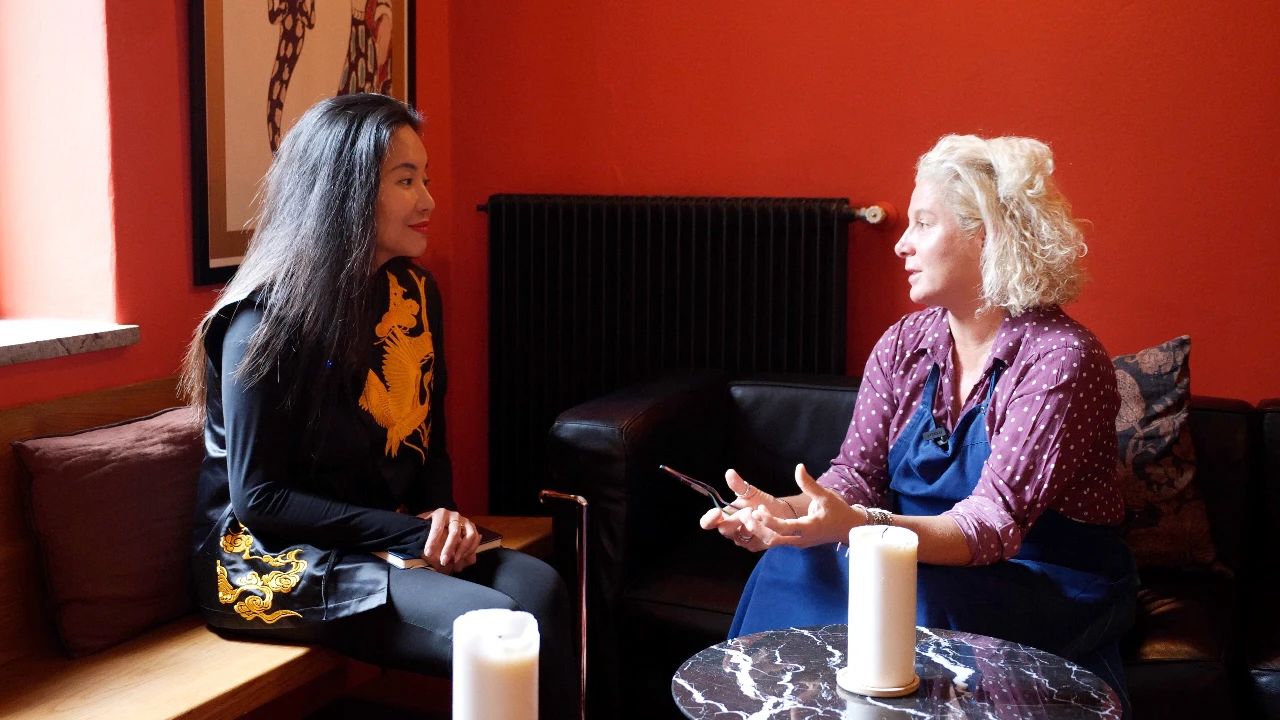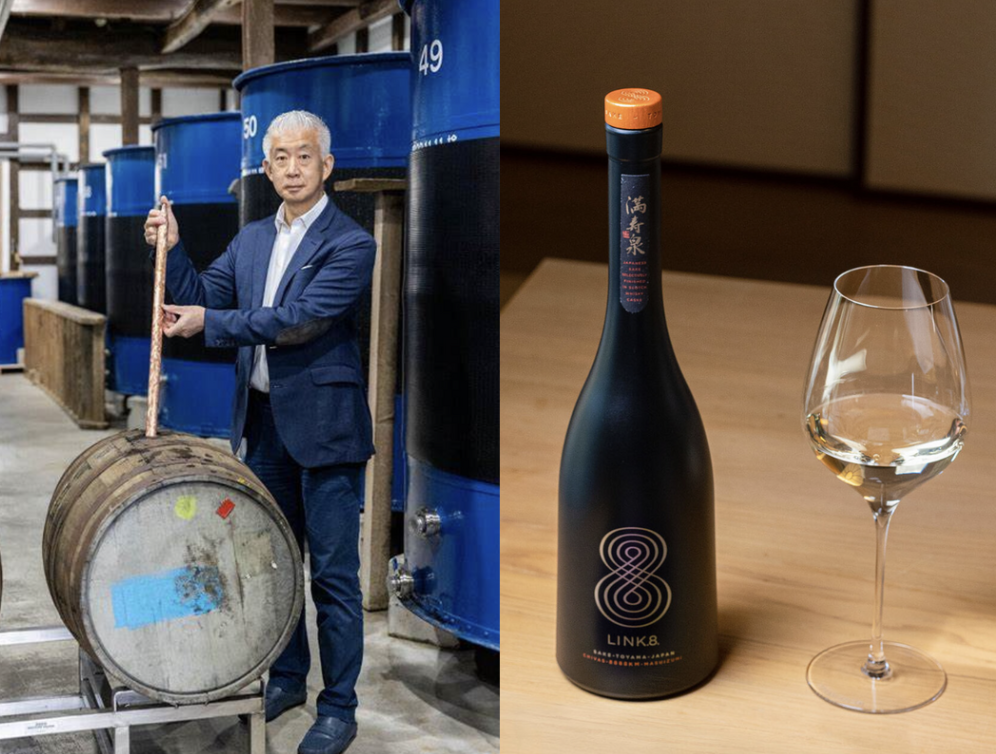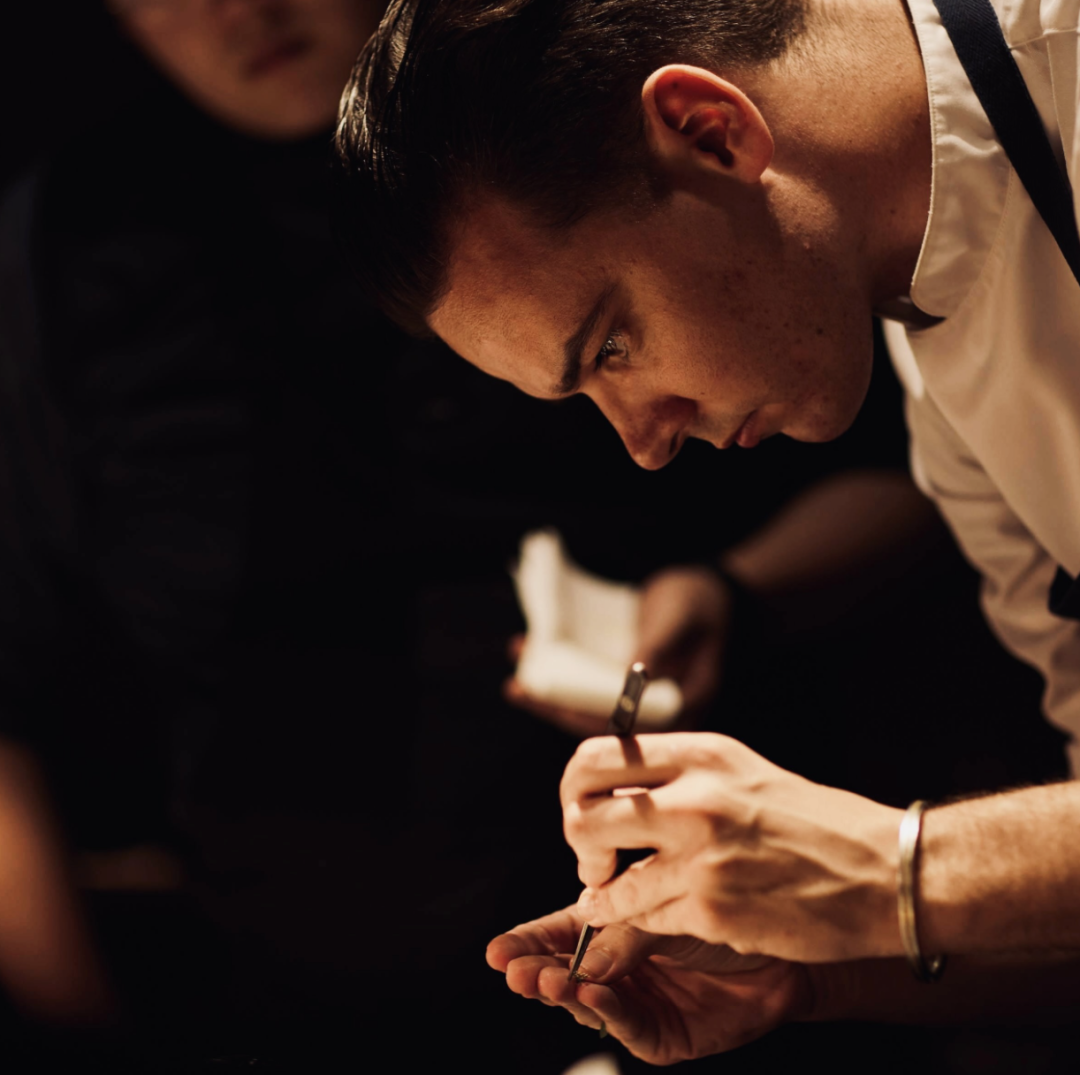Last month, André Chiang announced his upcoming retirement from the front line of the kitchen, officially stepping into the ranks of ‘honorably discharged’ chefs. From now on, his spatula might only be used to flip through textbooks, rather than food in a frying pan. Moving forward, he will become “Principal Chiang,” focusing on nurturing the next generation of chefs. The menu he launched, titled “Collective Memories,” is a beautifully premeditated plan he had been crafting for some time.(Watch the full dining experience on YouTube:Chef Andre Chiang’s “Collective Memories」)
Over the past decade, I’ve visited Taipei’s RAW nearly ten times. Partly because it’s difficult to get a reservation, and I don’t like to trouble others (do unto others as you would have them do unto you). On the other hand, RAW has a bustling atmosphere with 66 seats, which might be a bit too lively for me. But considering the smooth operation of this massive machine and the precision and consistency of the dishes, it’s truly admirable.
@Jocelyn華姐的TastyTrip YouTube
André had already planned his “the last dance” long before presenting the “Collective Memories” menu, which makes perfect sense. The gist of it is something like this: ‘You’ve all tasted the sweet, sour, bitter, and spicy flavors of my life, haven’t you? Well, here comes the main course—the grand finale of the grandmaster, after which I’ll retire from the world of cuisine! And these dishes won’t be cooked by me after 2024!’ This menu is a collection of dishes from different stages of André’s life, each holding special significance for him. Together, they form a narrative that evokes the imagery of a life flashing before one’s eyes, designed as a slideshow to pave the way for his ultimate presentation, “The Last Dance.” It’s not just a culinary experience but a retrospective journey through the memories of André’s flavor explorations and the diversity within.

Many restaurants around the world note the creation date of a dish when drafting their menus. However, designing a menu requires considering the transitions between dishes, making it nearly impossible to write it in a chronological format. Most menus are presented in a non-linear fashion to ensure the flavors flow harmoniously—for instance, serving a dish from 2020 first, followed by one from 2001. Another consideration is whether a dish remains relevant two decades later; can a dish from thirty years ago still be served on the table?
This season’s RAW menu is one of the rare ones presented in chronological order, yet the flavors still harmonize. Some dishes are progressive, while others are more abrupt, but the overall experience is seamless. This bold attempt showcases André’s ability to navigate different cultures and flavors, further highlighting his unique culinary journey. Hopefully, more Chinese chefs will embark on such a wonderful journey in the future.
The “Collective Memories” menu, André Chiang’s “summary of life’s flavors,” feels more like André’s fantastical journey, with several dishes leaving a lasting impression on me. For example, the 1996 Homard Pressé symbolizes the beginning of André’s culinary career in France. At the time, he was just in his early twenties and was fully responsible for a dish at a three-Michelin-starred restaurant, Le Jardin des Sens, representing the Pourcel twins’ acknowledgment of his skills. The outermost layer is a thin slice of smoked duck breast, wrapping terrine made from a lobster and vegetable broth base. The middle layers include sweet lobster meat, zucchini, mango, and celery root, along with crisp, green snow peas and cantaloupe. This dish is fresh, light, and incredibly well-executed, instantly transporting you to the taste memories of a French summer. Considering that over twenty years ago in France, a three-star chef entrusted such an important dish to a young Asian man, it was probably a groundbreaking achievement at the time.

Another dish that I particularly enjoyed was the 2001 Tomato Crab. Served in a crab shell, it features a base of rich, tangy tomato puree, topped with layers of tomato, crab meat, and avocado. The tomatoes are juicy and refreshing, with their sweetness concentrated to perfection, while the rich, creamy texture of the avocado complements the crab meat’s freshness. The flavor balance is masterfully handled, with the tomato’s sweetness elevated by enough acidity to enhance the crab’s umami. “Ordinary in appearance” but easily leaves a lasting impression on the palate.
Next, the 2002 Kaffir Lime Consommé is one of André’s classics created in Bangkok, blending French culinary techniques with Thai flavors. This dish combines sago and a French-style consommé technique to create a Thai Tom Yum soup, highlighting the vibrant flavors of lemongrass and lemon, paired with Japanese snow crab for added layers of umami, resembling a Japanese soup dish. Created over two decades ago, this dish must have been sensational at the time, and even today, chefs still attempt to replicate its flavors, proving its timelessness.
Following the Thai-inspired “soup dish” is the 2005 Red Snapper in Banana Leaf. Various vegetables, finely chopped and cooked like French Ratatouille, are mixed with African spices and tightly wrapped around the red snapper’s surface, before being baked together in banana leaves. The fish’s texture remains delicate and juicy, while the vegetables’ sweet and sour flavors balance the mildly spicy seasoning, served with the heart of palm and coconut meat, dressed with olive oil and spices, bringing an African flair. André mentioned that this dish marked a turning point in his culinary journey. Before this, he had only trained and worked in various three-star French restaurants, but this dish made him realize that ingredients could be so simple yet so beautiful.
 【2005|Mahe&Seychelles】Red Snapper in Banana Leaf
【2005|Mahe&Seychelles】Red Snapper in Banana Leaf
Another dish worth mentioning is the 2008 Black Truffle Foie Gras Mousse, an iconic creation from Restaurant André in Singapore, known as “Memory.” The rich foie gras mousse is steamed to the delicate texture of chawanmushi, smooth and creamy. The foie gras melts like butter on the tongue, paired with a thick black truffle sauce—a classic flavor combination that never goes out of style. I recall my experience during the farewell dinner in Singapore, where I felt an overwhelming sense of happiness in a relaxed state!
 【2008|Singapore】Memory – black truffle & duck foie gras mousse
【2008|Singapore】Memory – black truffle & duck foie gras mousse
The 2014 “Dirty Chicken, Umami Bomb” is André’s expression of Taiwanese flavors. Featuring black-boned chicken, traditionally used for soups, here it’s charcoal-grilled with crispy skin, and the meat is firm, tender, and juicy. Along with the “umami bomb” sauce, made from ingredients rich in umami like squid, kelp, tomato, and fish sauce, this dish successfully elevates Taiwanese flavors to another level.
Following dishes like the Dandan noodles from the “Langqiao” period and theBing-Fen from Sichuan Moon, the dessert menu ends with a 2019 Taiwanese-style petit four, particularly a taro peanut roll ice cream that embodies the hometown flavors of Yilan. The crispy shell wraps taro ice cream, sprinkled with peanut powder, garnished with cilantro, and enclosed in a layer of transparent rice paper at the bottom, perfectly encapsulating the essence of Yilan county’s signature street snack.
At first glance, the menu may seem like a hodgepodge, but the transitions are seamless. It begins with street snacks such as the Amuse Bouche, followed by cold French dishes, then a soup with a blend of Japanese, Thai, and French influences, and the main course features an Asian-flavored umami grilled chicken. Next, there are Sichuan-style Dandan noodles, and the flavor crescendo leads to desserts like Chengdu Ice Jelly (Bingfen). This personal chef’s fantastic journey is fascinating, with the dining experience reaching its climax, leaving diners with delight and satisfaction. In short, it’s a menu that brings joy to the heart.
 【2017|Macau】Bing-Fen
【2017|Macau】Bing-Fen
The entire “Collective Memories” menu is not only a flavor adventure but also a retrospective of André Chiang’s significant moments in life’s flavors. From French to Chinese, to African and Asian flavor fusions, these dishes also showcase his mastery of various culinary cultures. As he himself says, this menu is a summary of his passion and dedication to gastronomy.
My senior columnist once asked me: why does this gentleman need to make such a ‘fuss’ over announcing a restaurant closure? I told him it’s not excessive at all. After all, André stirs things up every ten years, like reminding us that geniuses just can’t sit still. In that sense, it seems quite reasonable, doesn’t it? André mentioned during the press conference that once he starts a project, he decides when it will end, which makes him cherish every single day. This idea truly inspired me. If a project doesn’t meet my expectations within five years, can I let it go? I don’t have the answer. He announced it upon achieving his goal. I hope I can be just as willful, but only if you work hard!
Next, we anticipate his final menu, “The Last Dance,” and wonder what surprises Taipei RAW’s final farewell menu will bring.
To be continued…
Photo: Patty Chuang/instagram@raw_taipei









